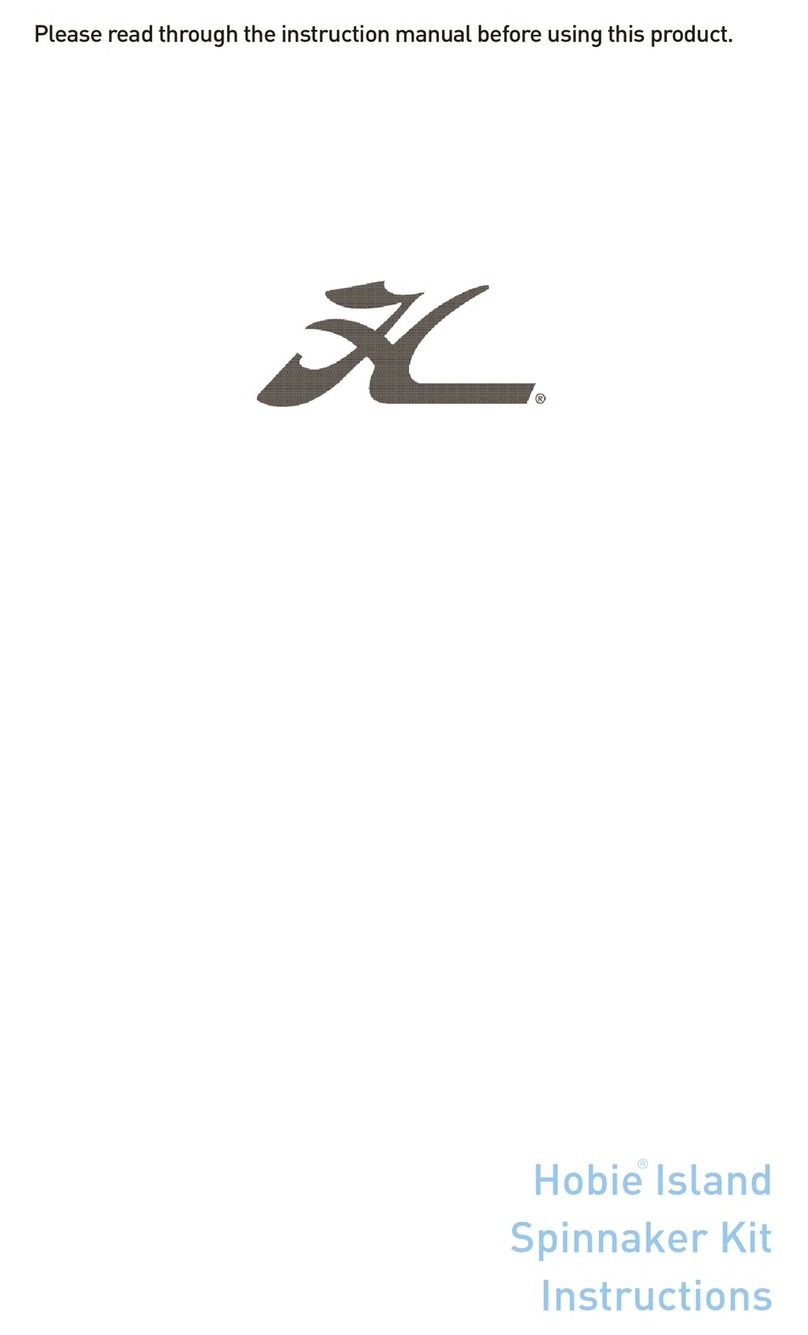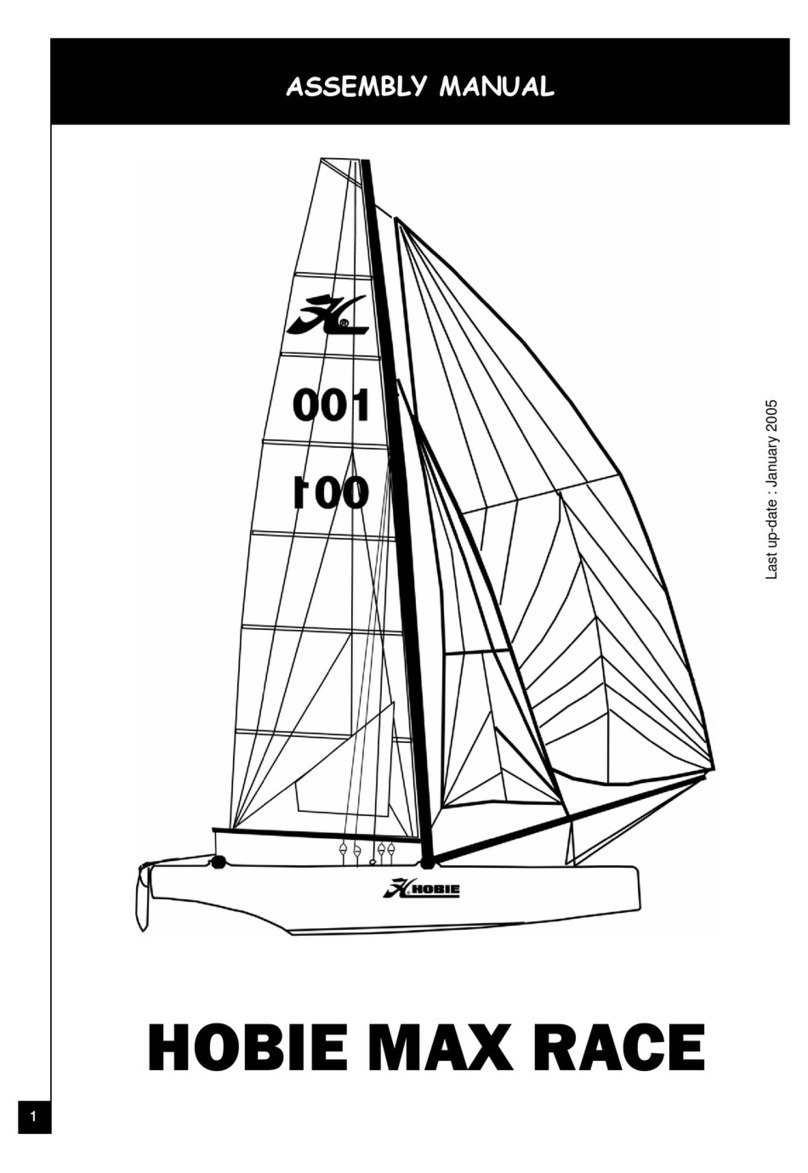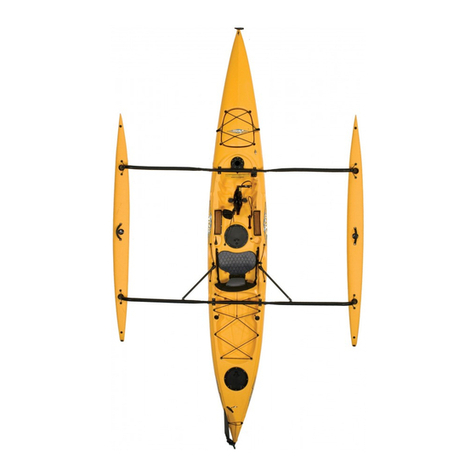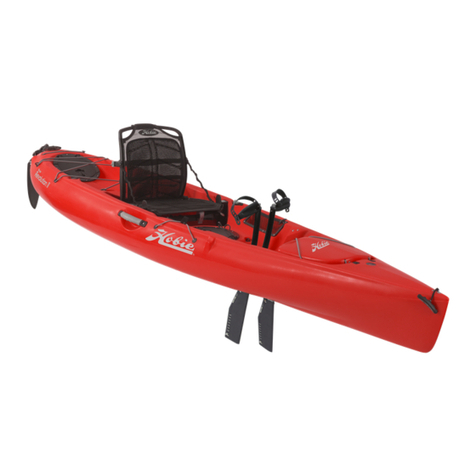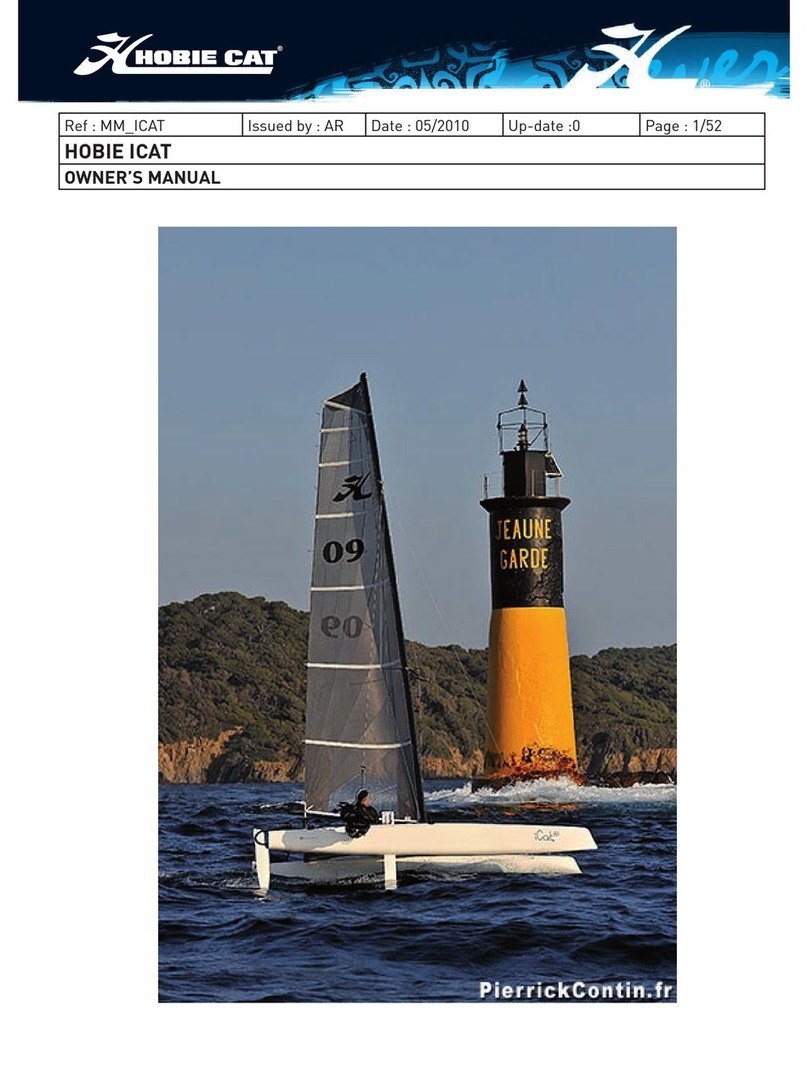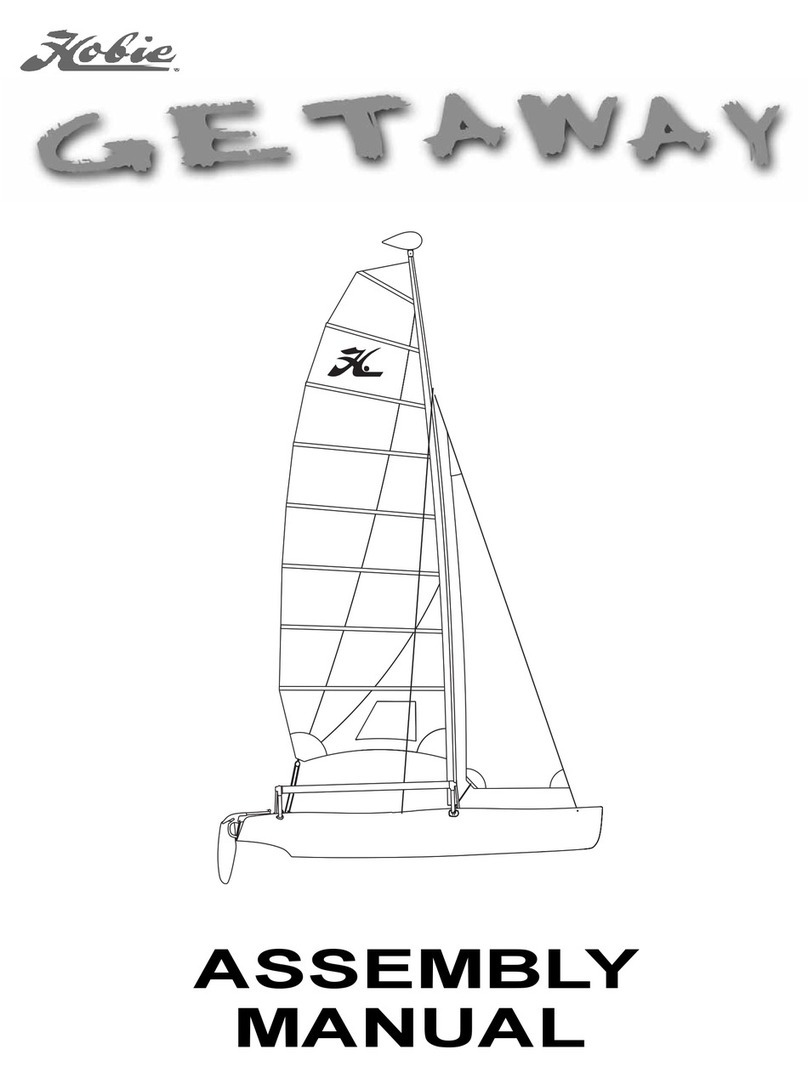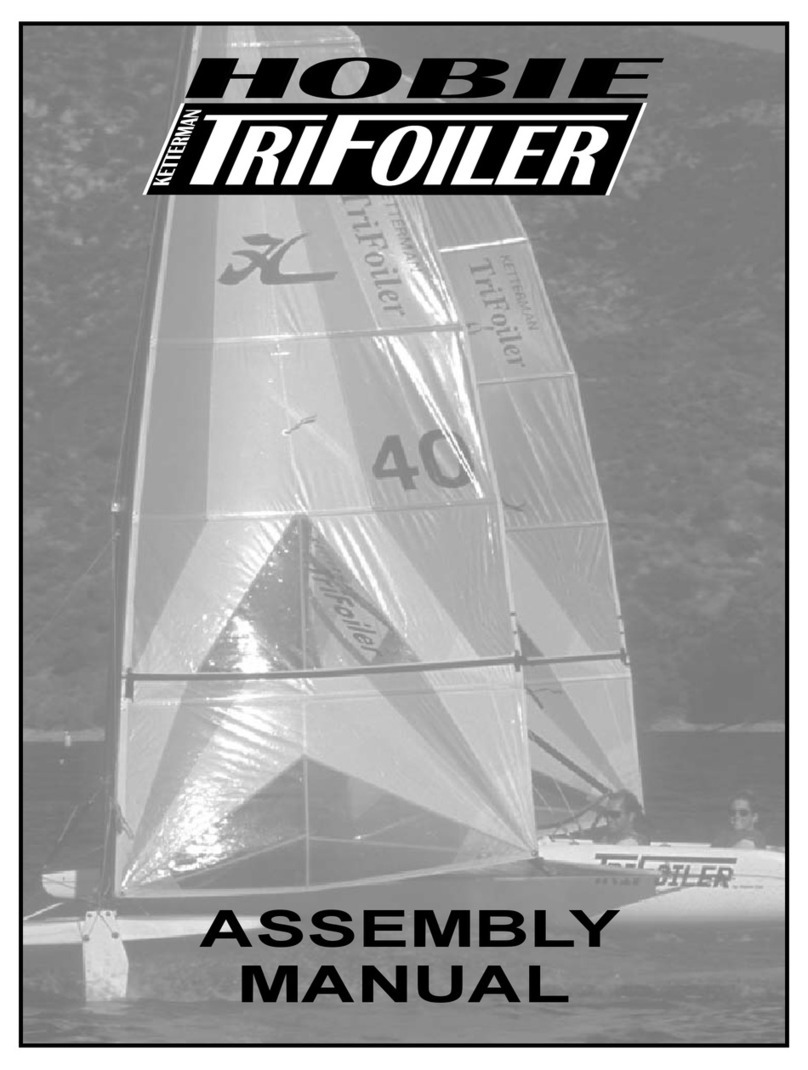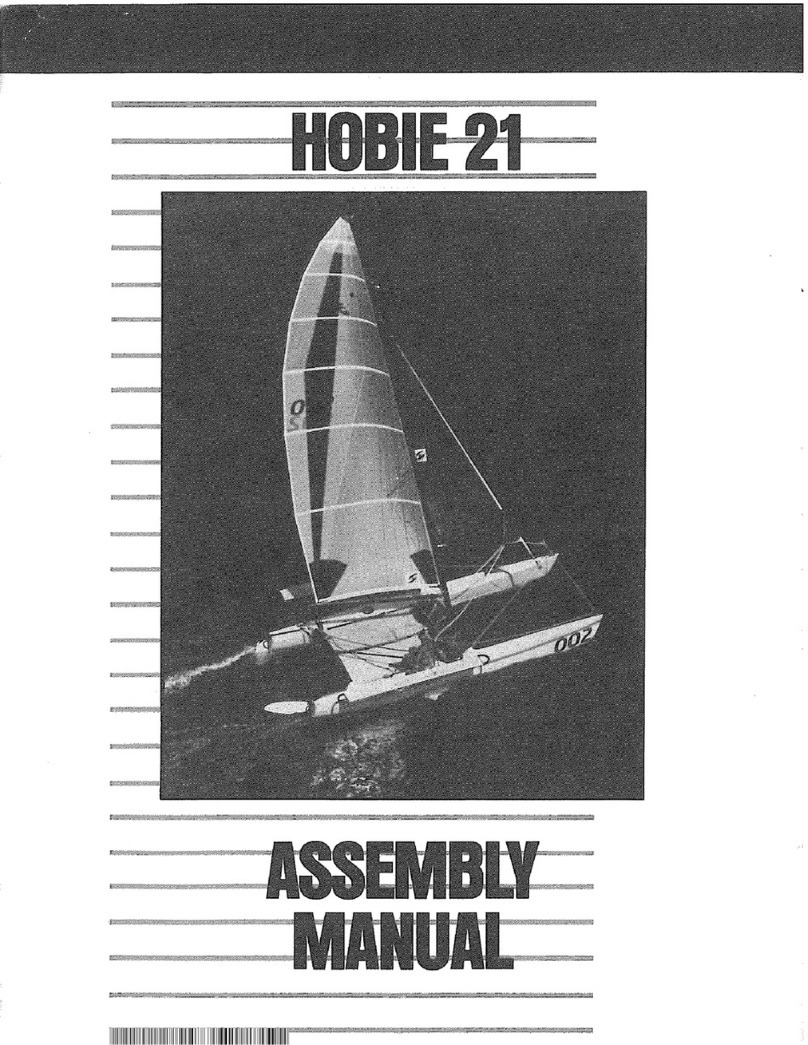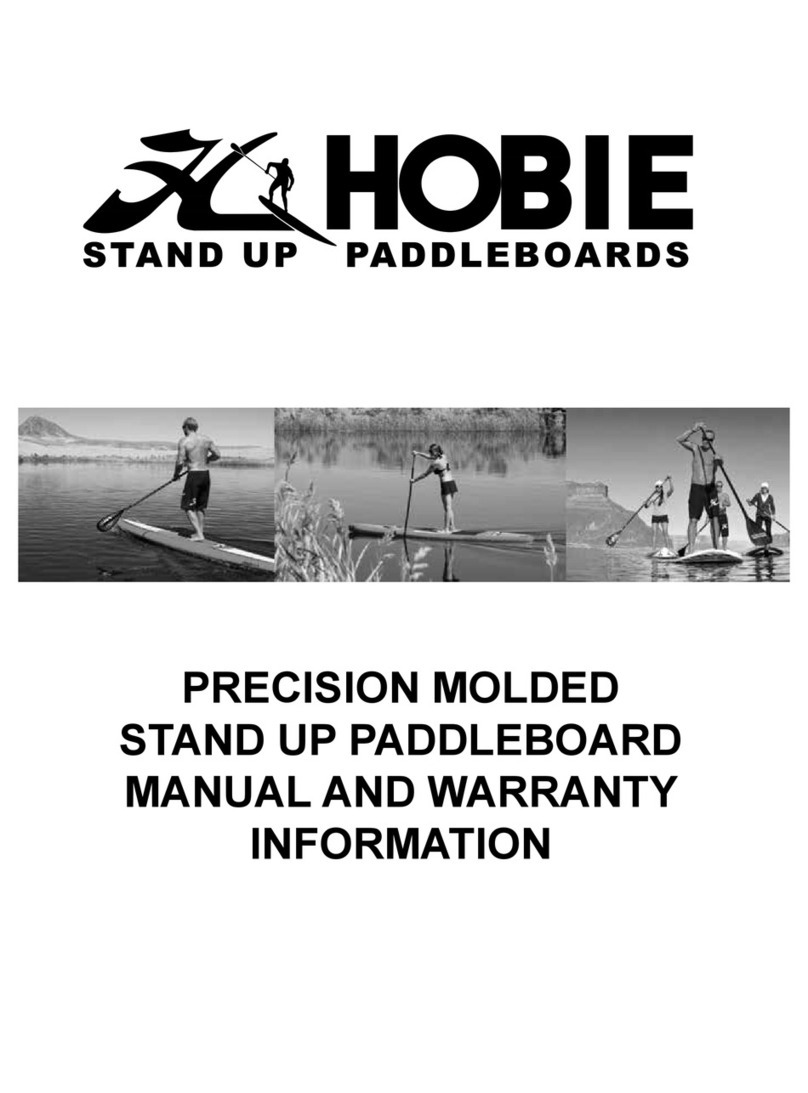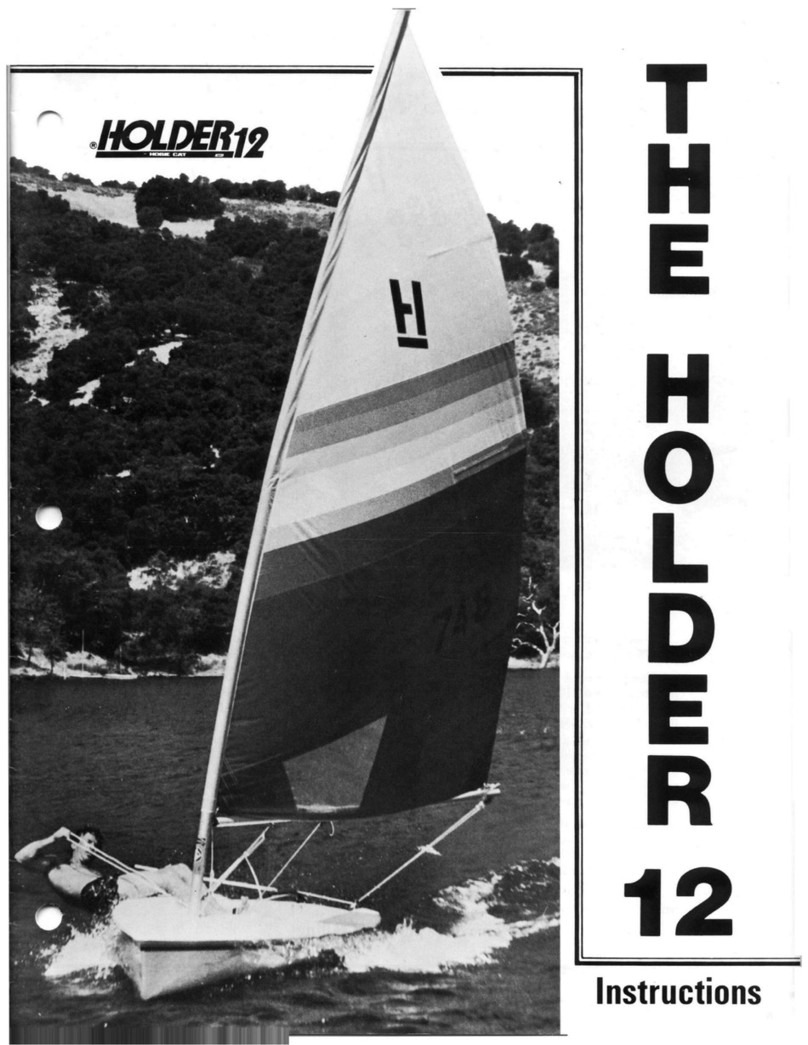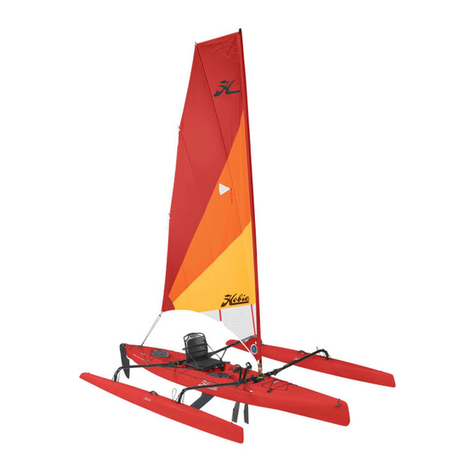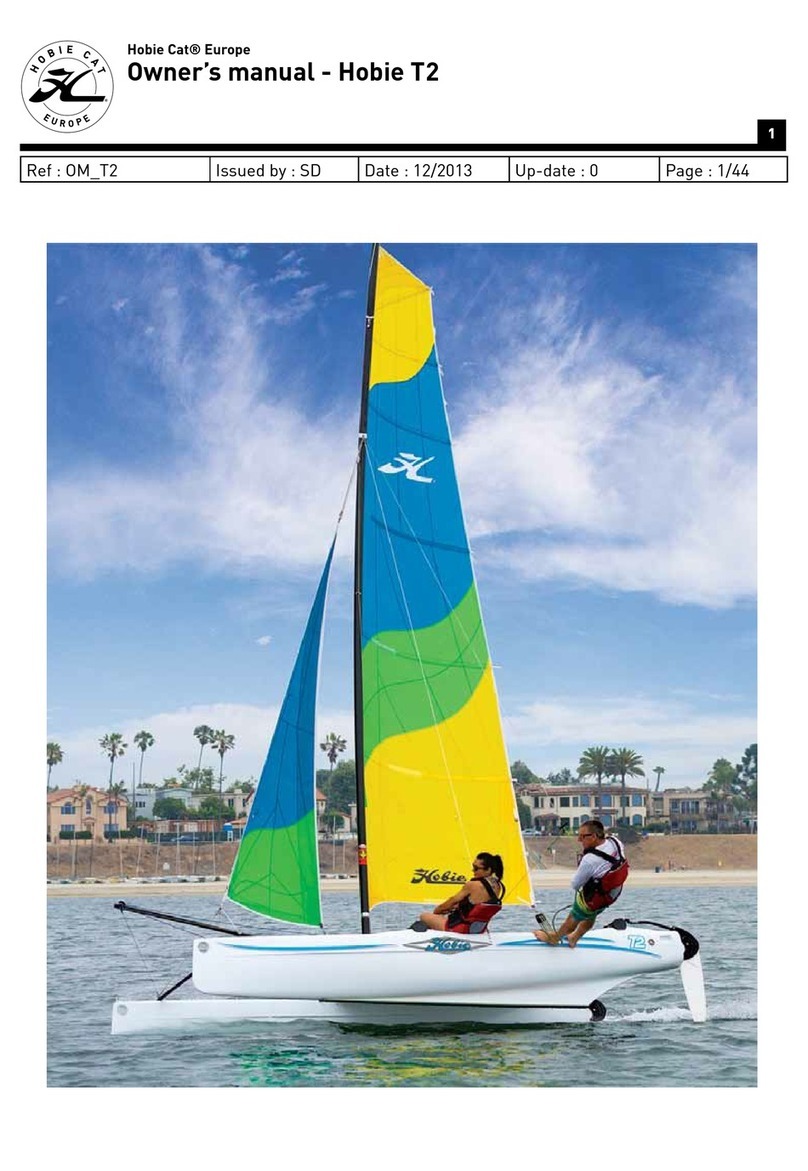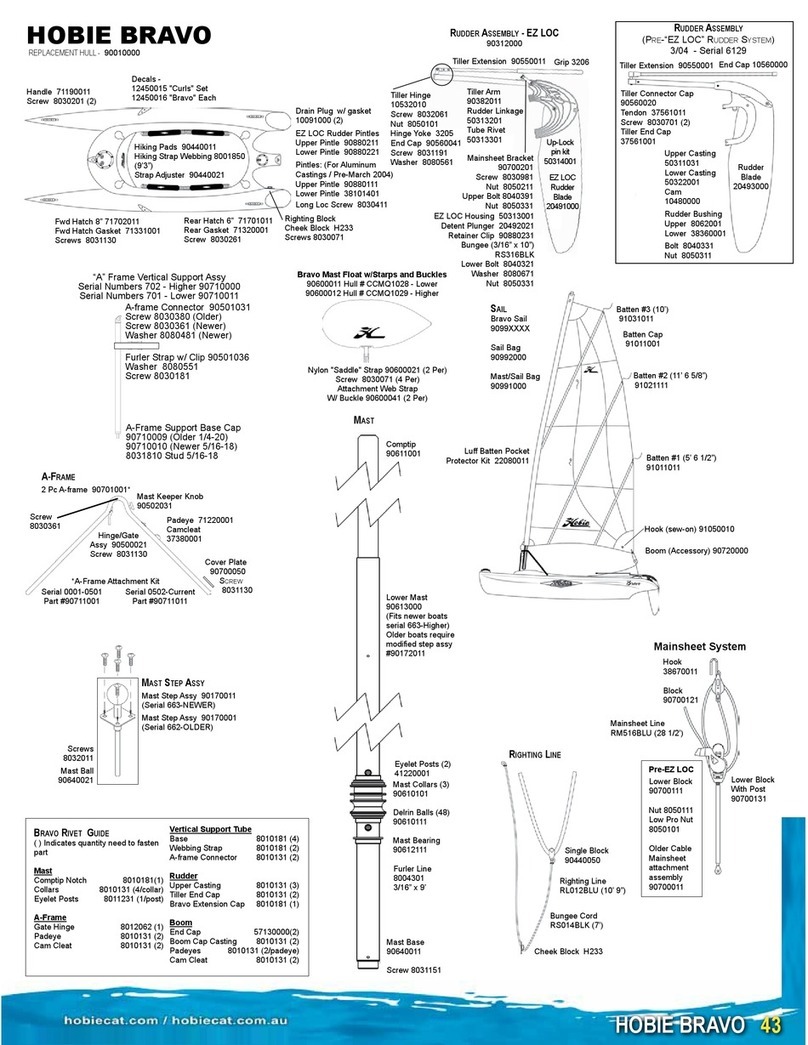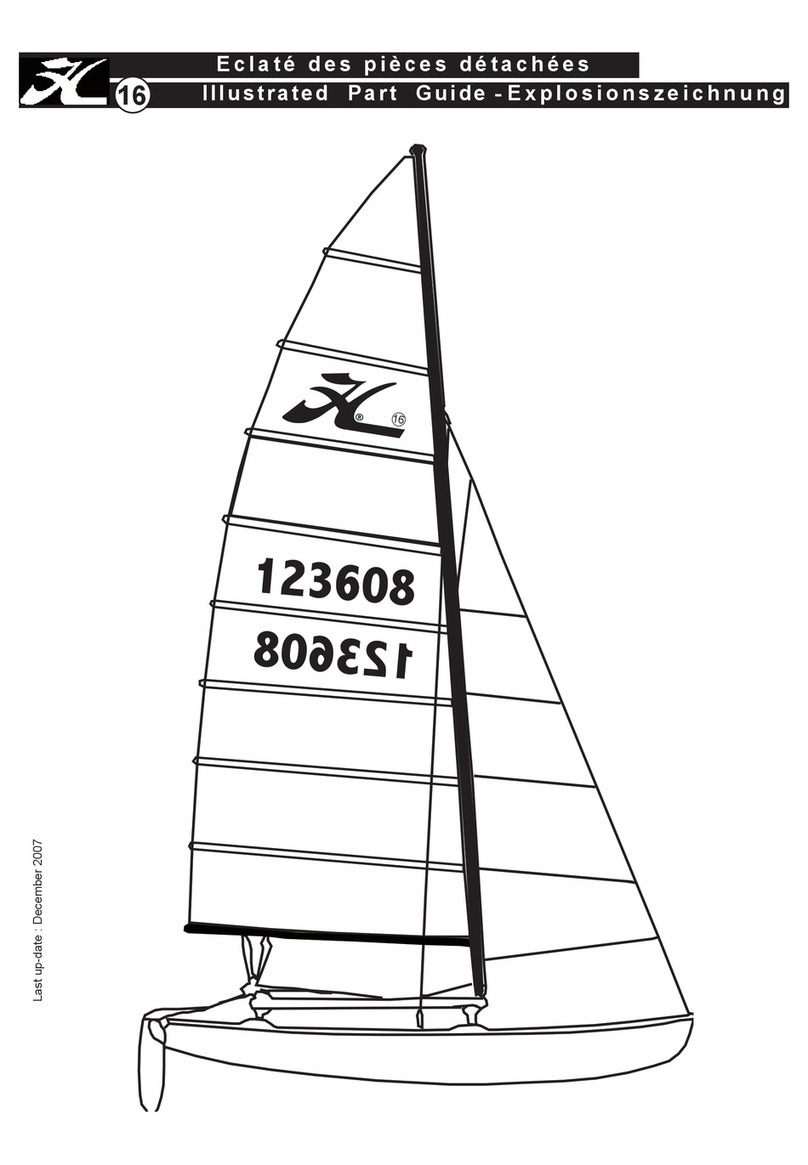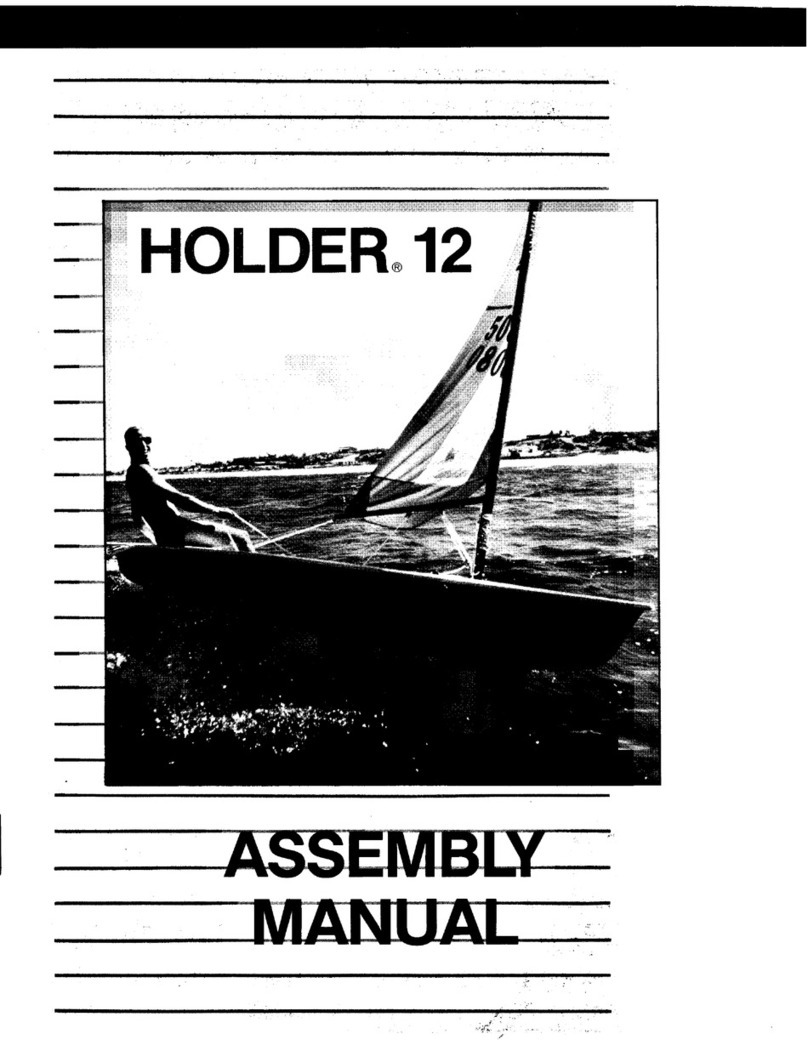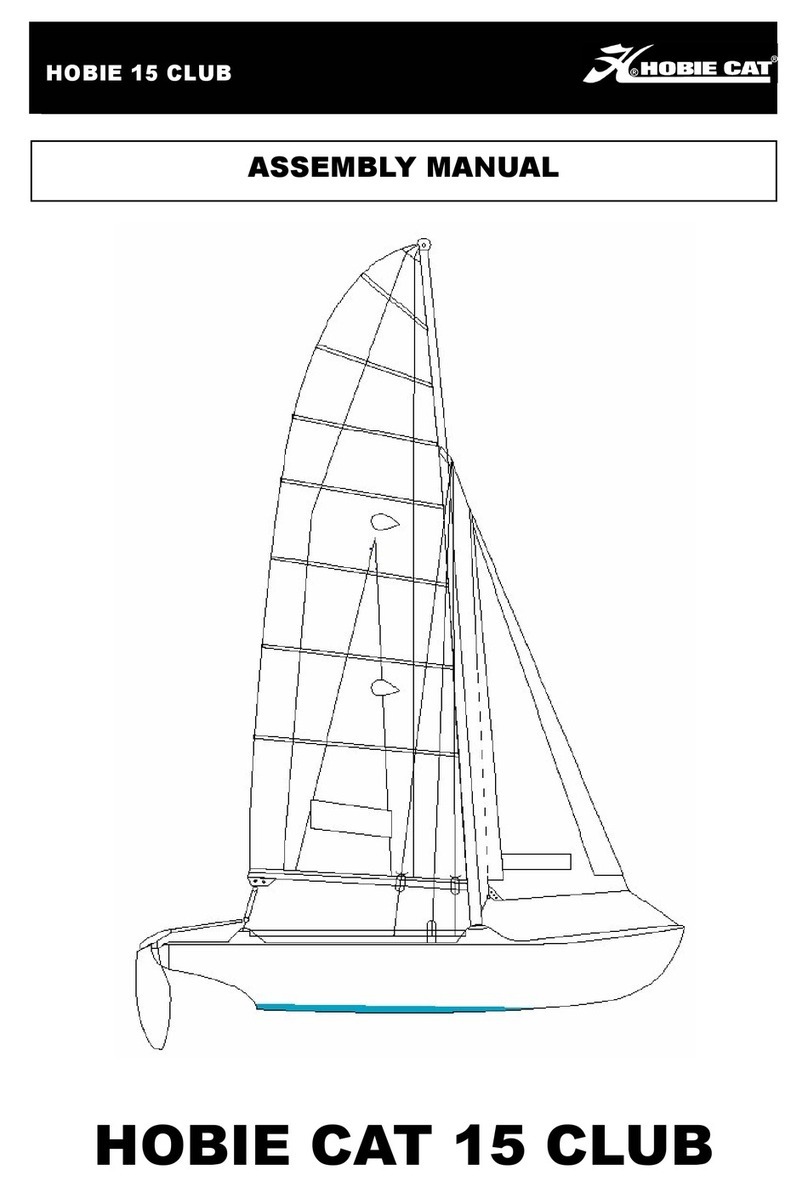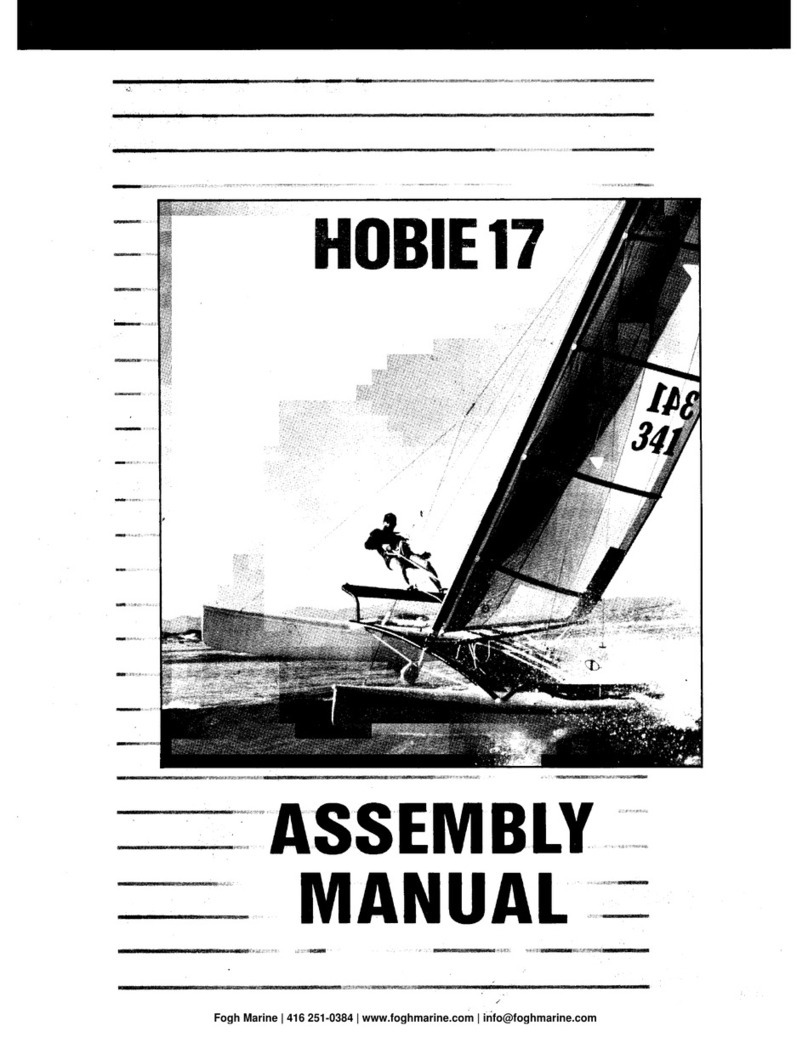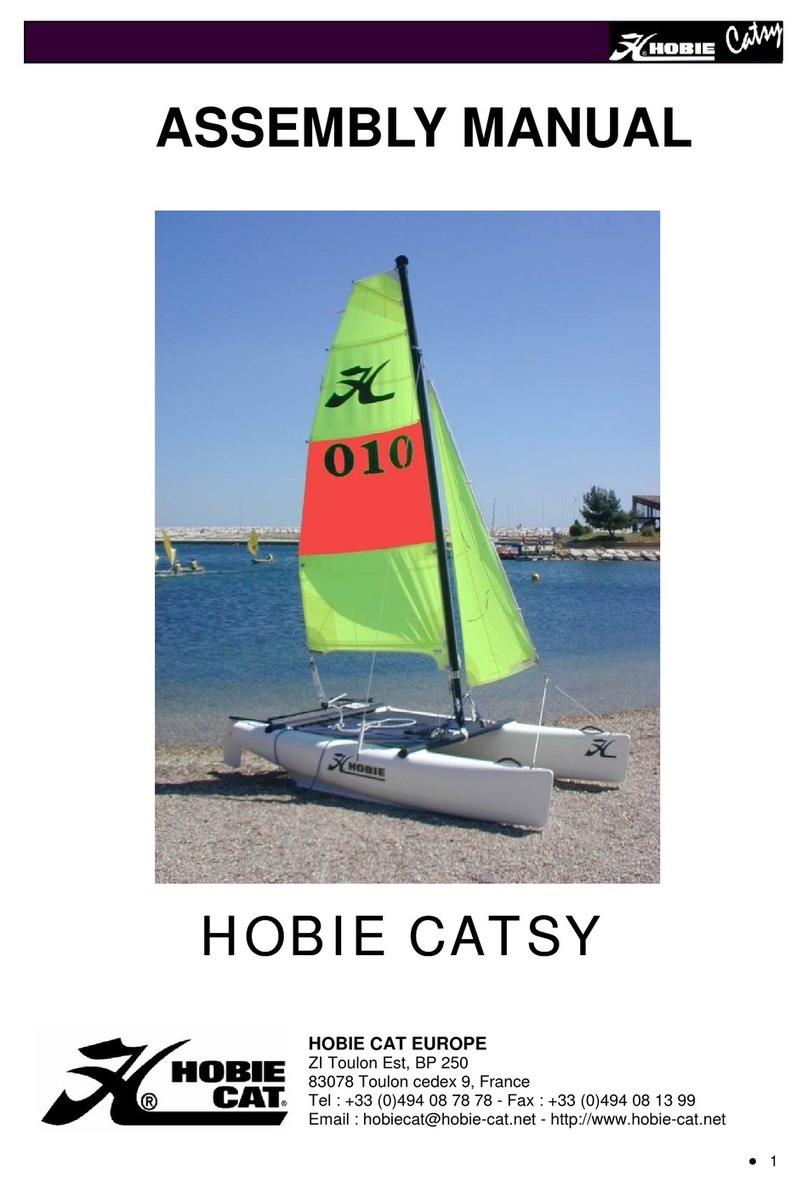8
Safety Checklist
·To avoid damage to the Hobie Mirage Drive, push either pedal
completely forward before beaching or in shallow water. Use
small, partial pedal strokes with one pedal nearly all the way for-
ward until there is adequate water depth for the Mirage Drive to
have complete clearance in the water.
·Consult your physician prior to beginning
paddle/pedal sports.
·Always carry the spare paddle provided with the boat.
·Obtain paddle/pedal sports instructions from your dealer specific
to this type of craft.
·Obtain certified first aid training and carry first aid and
rescue/safety equipment.
·Always wear a Coast Guard approved personal flotation device.
·Wear a helmet where appropriate.
·Dress appropriately for weather conditions; cold water and/or
weather can result in hypothermia.
·Check your equipment prior to each use for signs of wear or fail-
ure.
·Never pedal or paddle alone.
·Always tie a leash to your paddle.
·Do not pedal or paddle in flood conditions.
·Care must be made to ensure that the access hatches on your
kayak remain closed while on the water. Water can enter a hatch
that is left open and possibly flood the hull making the boat unsta-
ble or cause inadequate flotation for the passenger(s).
·Be aware of appropriate river water levels, tidal changes, dan-
gerous currents, obstacles in and above the water and weather
changes.
·Scout unfamiliar waters; portage where appropriate.
·Do not exceed your paddling/pedaling ability; be aware of your
limitations.
·Hobie Kayaks were not designed for fast moving water.
·Follow the manufacturer’s recommendations for use of this prod-
uct.
·If additional outfitting is added to this craft, use manufacturer-
approved materials only; do not impair entry or exit access.
·Read owner’s information package prior to using this product.
·The user of this product acknowledges both an understanding
and assumption of the risk involved in paddle/pedal sports.
·When paddling in a new area, check with the locals regarding
currents, shoreline conditions and weather patterns. Plan an
“escape route” -- an alternative place to get off the water should
environmental conditions dictate. Beware of offshore winds that
may make it difficult to return to shore.
·DO NOT use alcohol or mind-altering drugs prior to or while
using this product.
The Shakedown Cruise
As with any new product, it is important that you become familiar
with the craft and all its features. It is also important to determine
if the kayak is sound before long trips. We recommend that you
do what we call a “shakedown cruise” when the kayak is new,
after shipping or transport, before long trips and after installing any
through hull fittings. This test is typically done in shallow, calm
conditions where you can familiarize yourself with the boat or test
the boat before taking any long trips into open water. Things that
you should check or practice are
·Rudder Operation
·Mirage Adjustment
·Practice getting in and out of the kayak from a capsized state
·Drain plug locations to make sure they are properly installed
·Closing the hatches properly
·Taking the kayak sail down on the water (if applicable)

